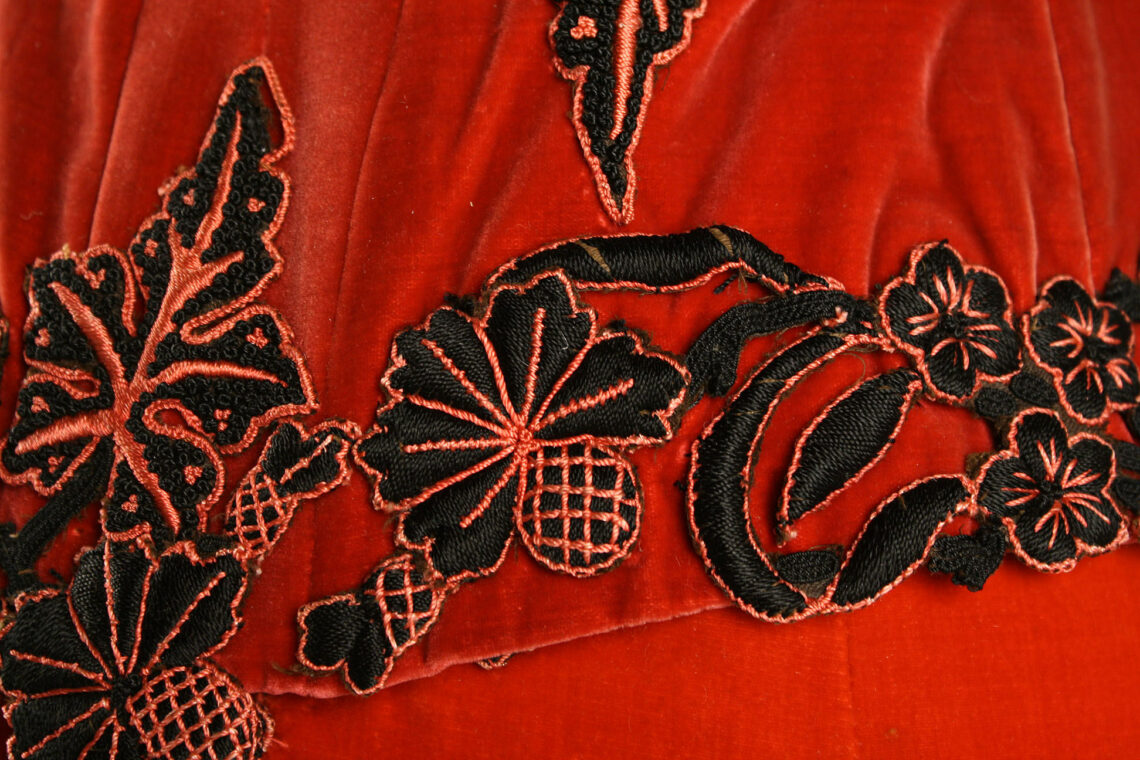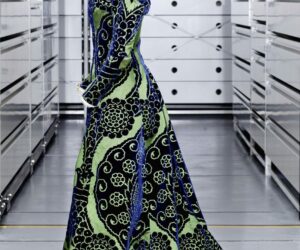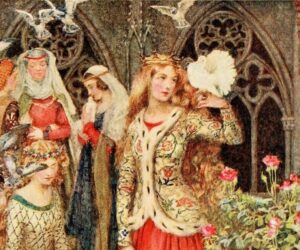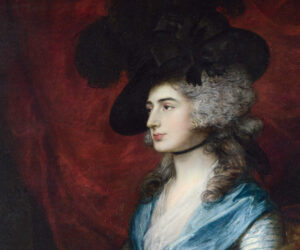
Don We Now Our Christmas Frippery: A Look at Holiday Fashion
1 – Welcome to #ThreadTalk! We're talking #Christmas frippery. 🎄🎀🎅
Fair warning: If you came for an uncomplicated, nostalgic look at this winter celebration, I suggest you take your eggnog & jingle along, Santa baby.
Still with me? Cool. Let's don our gay apparel & begin!
2 – Before we get to the frocks, Christmas as we know it is quite new. At least, the whole lighting trees, fancy outfits, presents, consumerism business.
We have Dickens, Hessian soldiers & capitalism to thank for that. Prang, 1880, below.
Watch out, kids. That's real fire!

3 – Lots of our current traditions are rather "new old-fashioned".
See, up in until the 19th century, Epiphany, not Christmas, was the biggest, baddest Church holiday in Europe. That's when things got exciting, being the day when the Three Wise Men came to say hey to Baby Jesus.

4 – Epiphany, & the 12 days of Christmas, parties were LIT.
In the Middle Ages it was not uncommon to see squires or lords open their halls for their tenants & feed them, allow them to celebrate & carouse.
Richard II famously fed 10K guests during Christmastime 1398.

5 – This Pieter Brueghel the Younger (before 1616, Netherlands) painting gives you a good idea of what I'm talking about.
Poultry running amok! Child unattended near flame! Bagpipes! Costumes! Ornamental garlic?
But clearly, common people shit.

6 – The theme is a frequent one for painters: peasants celebrating Twelfth Night, or anything Christmas-related. You even see some imagery (crowns) still used today.
David Tenier the Younger's example is even less flattering. Stark, coarse, drunken… 1635.

7 – Even by the early 19th century, Christmas is still considered the working person's holiday.
This 1812 print is in line–and even worse–than the previous images.
It's classist, racist, & misogynist all in one! (Matching attire has me reading these as servants).

8 – In Austen's Emma, for instance, as David Parker points out (link later), the Christmas dinner at Mr. Weston's is just a nice dinner. Mr. Woodhouse is grumpy about the whole affair. Enthusiasm for Christmas is for plebs.
But that's about to change.
9 – Enter: Romanticism.
Sir Walter Scott helped kindle a new generation to the lost, or nearly lost, common Yuletide traditions.
That's how Washington Irving got moving, and that's what writing and what (eventually) got Charles Dickens to America–Irving's biggest fanboy.

10 – Irving ushered in the Christmas pastiche w/a good narrative, combining themes from America's immigrant population & sentimental views of English Christmas. Not to mention flying St. Nick.
Which goes far back. This 14th C depiction is pretty metal. No, it's not Monty Python.

11 – Parker's thesis makes total sense to me. Dickens didn't get his cozy, middle-class version of Christmas from England at all–he got it from America & Irving.
It sure wasn't the Puritans. They preached against Christmas celebrations regularly.
This quote, y'all. I can't.

12 – Dickens falls in LOVE with Irving's Christmas, which assimilates a dozen different European Christmas traditions, and then he adds to it.
He markets his own version & it becomes a brand, just like him. People start making money off of selling Christmas.

13 – At the time, it was a bit uncommon for middle class folks to be so enthusiastic about Christmas.
But Dickens just kept on it, and given his popularity, the Western world followed his dream.
This Hot Ghost of Christmas Present couldn't have hurt. Check those abs, y'all.

14 – Before we talk dresses, a few things.
Christmas trees came to the US by way of Quebec (yes) via Hessian soldiers.
They then were featured on this book, The Stranger's Gift, in 1836, by Hermann Bokum.
Many, many house fires later.

15 – Santa came via the Dutch. He didn't wear red until Harper's Bazaar featured Thomas Nast's versions in the 1860s. Originally he was TINY. Then he eventually grew to human size. Previously he wore green or tan. St. Nick usually wore green.
Coca-Cola really pushed the red…

16 – Christmas was much bigger in the Southern States than the Northern US.
In the South it was seen as good ol' English pride.
It was also an opportunity for enslaved people to seek freedom during the chaos.
Christmas was when Harriet Tubman and her brothers escaped.

17 – So the line in "Deck the Halls"
Originally it was "Fill the meadcup, drain the barrel" not "don we now our gay apparel."
That change happened in 1877, just as the Christmas craze EXPLODED among the folks with $$$.
This is my surprised face. (St. Nick, 1294, Russia)

18 – The earliest gown I could find is this early Romantic piece.
It's got all the hallmarks of wistful dreamy Romanticism, & still would work at a soirée today.
You want holly? We've got holly! Red satin? YES. Pouffy boules? You get them, anyway. 1824-26, the Met. British.
19 – This woman's dressing gown looks straight out of Dickens. Just needs a sleep cap. Velvet buttons! 1860.
You probably already know my affinity for all things plaid (my wardrobe attests) and even with the mismatch, I don't care.
Wool, linen, muslin. MFA Boston.

20 – Would this dress give you arsenic poisoning?
Absolutely it would.
Would you look amazing in it?
Also yes.
Am I also a total sucker for silk moiré?
Always and forever. Velvet details just make it sing.
Can't be sure this is holiday, but it works. 1865, US. MFA Boston.

21 – Ma'am. This is just… this is just a Santa suit.
Except it's from 1863-1867, and it's a skating ensemble!
I don't know what to make of this. Other than the quilting would help prevent bruising for me.
The Met. British.
22 – I lived through most of the 80s, so I think red satin when I think Christmas.
This is heavy silk faille, which makes me think it would be fine in cold weather. Love those major mutton chop sleeves. Can you tell we're in the 1890s? 1895 to be exact, via Augusta Auctions.

23 – Feeling blue, instead? Brave those winter nights in this velvet and fur number from 1874.
Silk velvet never ceases to amaze me with its ability to drink up ALL THE LIGHT.
The whole ensemble here is just gorgeous.
24 – If it's a Christmas Ball you're after, this ballgown has all the drama up in the back and then some. Those 1870s weren't messing around, that's for sure.
And the detail. Appliqué? Whatever it is, good heavens. It's EXPENSIVE.
25 – So keep in mind, as we look at these dresses, that the commercialization of Christmas means it becomes homogenized.
It also becomes VERY WHITE centered. Cultures get watered down, lost.
In spite of attempted nostalgia, the opposite happens.
It's Macy's parade (1940).

26 – It's a way to keep everyone on the same page. To wink wink, nod nod, we're all Americans here.
And aren't we all so happy & fulfilled?
Because Santa brings gifts to all the good kids. Even the poor ones, right? So what if the rich kids get Playstations & poor kids don't.

27 – Here's another pretty dress.
Some blood red void silk velvet.
Expensive beyond imagining. Beautiful. Warm. Expertly made.
From the MFA Boston, late 19th C.

28 – Remember friends, clothes are power. And Christmas is no exception.
I make cookies every Christmas, & these old recipes always call for spices.
Rich people didn't care about spices. But poor folks did. That's why so many holiday recipes call for them. It was special.

29 – All we can do is be a bit more mindful.
Christmas, as we know it, is a lot of things.
But it is not without a very specific narrative, moved for very specific reasons… mostly to make money, and mostly about privilege.
And I didn't even get into Christmas cards! Oof.

30 – Now, for sources.
Most importantly, is David Parker's article, "Dickens and the American Christmas" — which was a cornerstone for tonight's talk. Highly recommended read.
https://www.jstor.org/stable/45291876
31 – Sources 2
The History of Santa's Style
https://www.tcs.cam.ac.uk/the-history-of-santas-style/
https://www.scotsman.com/lifestyle/christmas/why-does-santa-wear-red-history-saint-nicholas-and-how-he-has-changed-over-years-3058423
https://en.wikipedia.org/wiki/Santa_suit
https://www.jstor.org/stable/48579557
History of Christmas:
https://www.rutgers.edu/news/surprising-history-christmas-traditions
https://www.historytoday.com/archive/christmas-19th-century-america
32 – Sources 3
Epiphany/Twelfth Night
https://en.wikipedia.org/wiki/Twelfth_Night_(holiday)
Richard II feast:
https://www.bl.uk/learning/timeline/item105853.html
https://hforhistory.tumblr.com/post/134719896889/roast-peacock-for-christmas-and-10000-guests
Washington Irving:
https://www.neh.gov/humanities/2016/fall/feature/how-washington-irving-shaped-christmas-in-america
https://www.jstor.org/stable/j.ctvhrd0t9.12
Victorians
http://www.victoriana.com/Victorian_Christmas/Christmas_in_the_Victorian_Times.html
https://www.vintag.es/2015/12/rare-vintage-photos-of-christmas-in.html
33 – Sources 4
Puritans:
https://www.nytimes.com/2012/12/15/opinion/the-puritan-war-on-christmas.html
Deck the halls
https://en.wikipedia.org/wiki/Deck_the_Halls
Christmas Cards:
https://www.jstor.org/stable/29781786
Harriet Tubman:
https://docsouth.unc.edu/highlights/holidays.html
https://www.history.com/news/christmas-slavery-american-south
34 – My last little note is that Epiphany was so popular, it was given name from the Greek–Theophany
Tiffany.
Which leads to "the Tiffany Problem" as coined by Jo Walton.
i.e. if I write a medieval woman named Tiffany Smith, you are not gonna buy it.
35 – Above article by @NinjaFingers! It's cool to do research and come across someone you recognize! 😀
ANYWAY! Thank you for staying up with me tonight.
As people have asked, I do have a tip jar in my bio. I spend tips on ink and tea.
Yay for #ChristmasFrippery!
Originally tweeted by Natania Barron (@NataniaBarron) on December 6, 2021.

















